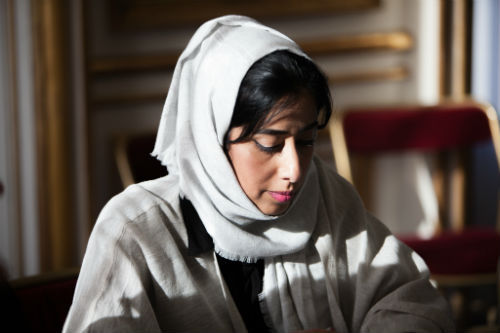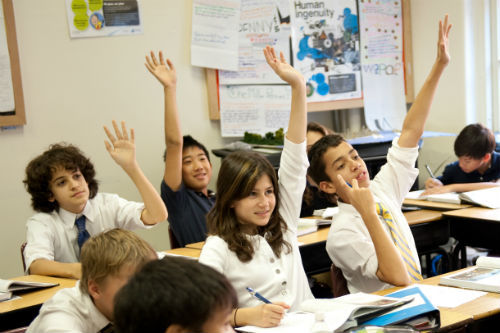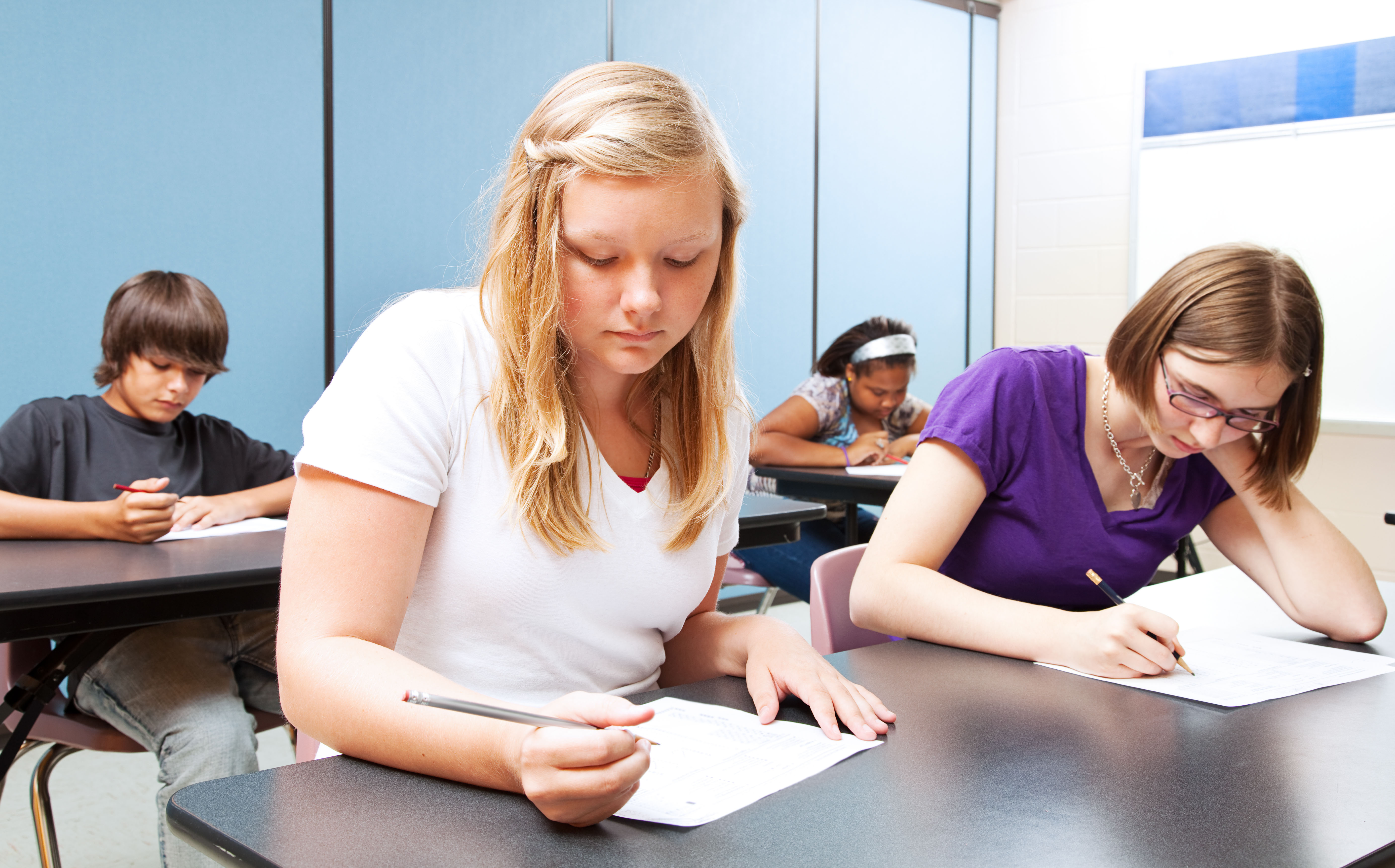
PISA’s just published report – The ABC of Gender Equality in Education: Aptitude, Behaviour, Confidence – gives a much needed update on the status of gender in education today. Since the 1960s, the average number of years of schooling has been roughly equivalent for men and women in the industrialized world. This boost in female schooling has led to economic growth. Yet the fact remains that women earn, on average, fifteen percent less than men.
The report helps to shed light on this problem. Economic inequality in pay is at least partially attributable to women pursuing less lucrative careers than men. Women don’t go into science and engineering as often as men do, and have lower self-confidence in this area (despite testing similarly).
So while we have had an amazing leap forwards in closing the gap between women and men in knowledge attainment, the gap in confidence presents a challenge that must be addressed. If women are to enter the sciences and earn as much as men, than their confidence must first grow.
Some other interesting facts revealed are that while boys spend more time playing video games and less doing homework than girls, a moderate amount of video games helps increase boys’ digital reading skills. However, girls still do better in both digital and print reading. Interestingly, the gap between girls and boys in reading disappears when both become young adults.
Hopefully, this report will encourage educators to seriously consider the role of confidence in math and science, especially as it relates to career paths for women. Francesca Borgonovi (PISA Analyst) and Marilyn Achiron (Education Editor) compiled and wrote the PISA findings. To discuss The ABC of Gender Equality in Education: Aptitude, Behaviour, Confidence further, I invited them to share perspectives in The Global Search for Education today.

Marilyn and Francesca: “Young men are significantly more likely than young women to be less engaged with school and have low skills and poor academic achievement.” “Meanwhile in Higher Education and beyond, young women are under-represented in the fields of mathematics, physical science and computing.” What do you think are the main drivers of these gaps?
For boys, it’s a matter of attitudes and behavior, some of which are shaped by gender stereotypes in society. It’s not “cool” for boys to excel in school; teenage boys are testing their independence and their lack of respect for authority, so they arrive late for school, they hold negative attitudes towards school, they are less attentive in class and so lose out on learning opportunities.
Girls, even high-achieving girls, are less confident in their abilities in mathematics and science and more anxious towards mathematics. As such, they are less apt to want to pursue further education in these subjects or to pursue a career in mathematics or science-related fields.
You note that boys spend one hour less per week on homework and play video games more than girls, which leads to poorer academic results. Are there any positive consequences related to “unplugged” things that boys engage in? Does it translate into confidence or problem solving skills?
Playing video games a moderate amount of time does build digital reading and navigation skills and spatial skills. Boys, in fact, are better in digital reading (reading on computers) than in paper-based reading (though they still trail girls by a wide margin), probably because they are more comfortable in digital environments.

As stated in your study’s Forward, girls in some countries have higher PISA mathematics scores than boys. Why among high performing students do girls do worse than boys? What are the implications of this?
In addition to their lower levels of confidence and higher levels of anxiety towards mathematics, PISA finds that girls are not as good as boys in taking what they’ve learned and applying it in novel situations. Perhaps because of their lower confidence, they are less willing to take risks in their thinking for fear of making a mistake. Given that innovation is generally built on a series of setbacks and failure, this implies that girls are less likely to be innovators because they don’t have the confidence needed to allow themselves to fail.
You note that girls tend to under achieve boys in formulating situations mathematically and in their ability to apply their knowledge of science. Why do you conclude that this gap may be related to girls’ self-confidence? What other key factors do you see?
Girls’ underachievement in these specific skills may also be related to the otherwise positive attitudes they have that make girls all-around “good students”: they are attentive in class, they respect authority, they want to please others, they want to get good marks (i.e. they want to succeed). They are very good at learning and being able to repeat what they have learned; but they are less good at taking what they have learned and applying it to new situations, in new contexts.

You note that efforts by parents, teachers, policymakers and opinion leaders are needed for boys and girls to realize their full potential. Can you please give us your 5 best ideas for reducing the gender gaps?
Give students a greater choice in what they read: Demanding that poor readers, who are overwhelmingly boys, read texts that they may find too challenging – and maybe uninteresting to them as well – may alienate them from reading altogether. It’s possible that if boys were assigned to read fiction they found interesting or books about sports stars they admire, they might be more easily persuaded to spend time reading both fiction and long non-fiction material that they might otherwise reject. PISA finds that students who read comic books, magazines and newspapers, for example, are better at reading than those who do not read any material.
Allow some video gaming, but homework comes first: Parents and teachers often chastise boys for the amount of time they devote to gaming and the amount of time they do not devote to doing their homework. Instead, they could forge a “learning contract” with both boys and girls: parents and teachers could allow children to play video games, in moderation, recognizing that those games can help children acquire important skills, but children would have to complete their homework too.
Train teachers to be aware of their own gender biases: The report shows that teachers generally award girls higher grades than boys, given what would be expected after considering their performance in PISA. Girls’ better grades may reflect the fact that they tend to be “better students” than boys: they tend to do what is required and expected of them, and they are more driven to excel in school. Training teachers to recognize and address any biases they may hold about different groups of students – boys and girls, socio-economically advantaged or disadvantaged students, students from different ethnic or cultural traditions – will help them to become more effective teachers and ensure that all students make the most of their potential.
Build girls’ self-confidence: Students’ beliefs about their own competence in mathematics are related to how well they perform compared to their classmates, and also to how well they perform in mathematics compared to their performance in other subjects. Teachers and parents can stop the corrosive effects of these comparisons and help girls to build their confidence by evaluating girls’ actual abilities – noting the tasks they can accomplish relatively easily and those with which they struggle. They can provide positive reinforcement for the work girls do well and offer girls opportunities to “think like scientists” in low-stakes situations, where making mistakes does not have consequences on their marks. PISA also finds that teaching approaches that require students to solve problems independently are associated with better performance in mathematics – particularly among girls.
Help students look ahead: PISA finds that, on average, boys are more likely than girls to have acquired a set of skills that could help them to navigate the job-search process, to apply for a particular job, and to succeed in job interviews. But a sizeable proportion of both boys and girls appear to be unprepared to take the next steps towards either further education or the labor force. Education systems could strengthen their career advice and orientation services by forming networks across schools and creating partnerships with local business groups and trade associations, and by inviting parents to offer job-shadowing opportunities and “bring your child to work” programs. They could also encourage parents to speak to classes, explaining their work and the skills most valued and developed in their jobs. By creating these networks of interested schools, particularly schools serving diverse student populations, local authorities and school principals can ensure that all students, regardless of the socio-economic profile of the school or the individual student, are exposed to the breadth of opportunities that are available in the local labor market.

Join me and globally renowned thought leaders including Sir Michael Barber (UK), Dr. Michael Block (U.S.), Dr. Leon Botstein (U.S.), Professor Clay Christensen (U.S.), Dr. Linda Darling-Hammond (U.S.), Dr. MadhavChavan (India), Professor Michael Fullan (Canada), Professor Howard Gardner (U.S.), Professor Andy Hargreaves (U.S.), Professor Yvonne Hellman (The Netherlands), Professor Kristin Helstad (Norway), Jean Hendrickson (U.S.), Professor Rose Hipkins (New Zealand), Professor Cornelia Hoogland (Canada), Honourable Jeff Johnson (Canada), Mme. Chantal Kaufmann (Belgium), Dr. EijaKauppinen (Finland), State Secretary TapioKosunen (Finland), Professor Dominique Lafontaine (Belgium), Professor Hugh Lauder (UK), Lord Ken Macdonald (UK), Professor Geoff Masters (Australia), Professor Barry McGaw (Australia), Shiv Nadar (India), Professor R. Natarajan (India), Dr. Pak Tee Ng (Singapore), Dr. Denise Pope (US), Sridhar Rajagopalan (India), Dr. Diane Ravitch (U.S.), Richard Wilson Riley (U.S.), Sir Ken Robinson (UK), Professor PasiSahlberg (Finland), Professor Manabu Sato (Japan), Andreas Schleicher (PISA, OECD), Dr. Anthony Seldon (UK), Dr. David Shaffer (U.S.), Dr. Kirsten Sivesind (Norway), Chancellor Stephen Spahn (U.S.), Yves Theze (LyceeFrancais U.S.), Professor Charles Ungerleider (Canada), Professor Tony Wagner (U.S.), Sir David Watson (UK), Professor Dylan Wiliam (UK), Dr. Mark Wormald (UK), Professor Theo Wubbels (The Netherlands), Professor Michael Young (UK), and Professor Minxuan Zhang (China) as they explore the big picture education questions that all nations face today.
The Global Search for Education Community Page
C. M. Rubin is the author of two widely read online series for which she received a 2011 Upton Sinclair award, “The Global Search for Education” and “How Will We Read?” She is also the author of three bestselling books, including The Real Alice in Wonderland, is the publisher of CMRubinWorld, and is a Disruptor Foundation Fellow.





Recent Comments